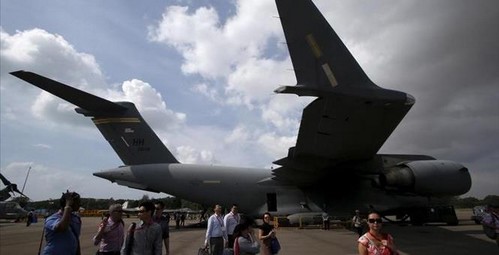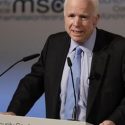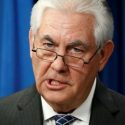The Pentagon’s Air and Sea Lift Deficit
On May 2, U.S. Transportation Command commander Air Force General Darren McDew told the Senate Armed Services Committee that America doesn’t have enough supply ships, transport planes and tanker planes to move a large combat force to a distant battlefield (like Korea) and sustain that force.
To win a war, warriors and weapons must reach the battlefield and soldiers and machines must be supplied.
General McDew told committee chairman Senator John McCain that the U.S. can airlift only one brigade combat team from the U.S. to a theater of operations such as Korea. Flying one brigade combat team would require the USAF to “surge” every large jet transport in its inventory.
McCain said he doubted “there’s a conflict in Korea for which one brigade combat team would be sufficient.” That’s an understatement.
McDew said airlifting an “initial” brigade (to Korea as a rapid reinforcement) would take around 200 C-17s. McDew agreed that supplying the brigade while delivering more units would be very difficult. He deftly acknowledged America might lose some transports to enemy action.
The U.S. has around 220 C-17 Globemaster IIIs and some 50 modernized C-5 Galaxies.
Both jets can carry the M1 Abrams tank. However, the best way to move a heavy armor unit (versus a single tank) is on the fast “roll on-roll off” sea ships operated by the Military Sealift Command.
McCain said the Pentagon needs the MSC’s organic “surge sealift fleet” for rapid response operations. MSC currently has 27 vessels. The senator estimated it needs ten more to meet minimum requirements.

But hauling the vehicles requires seaworthy ships. On average, MSC ships are 39 years old and poorly maintained. A recent report rated fewer than 60 percent as “ready” for service.
Why? Over the last decade, in order to pay for operations, the Pentagon has reduced maintenance funds.
The sealift ships aren’t the only equipment that has degraded due to limited maintenance. During the hearing, McCain lamented that “A look at sealift…reveals the same downward spiral we’ve seen elsewhere in the military: budget cuts mean fewer new ships, existing ships get older, maintenance gets more expensive and more difficult, readiness suffers, and more money is siphoned from future modernization to pay for current readiness.”
McCain has argued the situation must improve or America will not have the capacity to a Korea-type crisis respond in time and with an effective military force.
McDew and McCain also discussed cyber threats. TRANSCOM operates with commercial logistics, supply and communications services and their information networks are vulnerable to enemy cyber attacks. Cyber attacks can seriously damage the U.S. logistics system.
McDew said he thinks the USAF will need more KC-46 Pegasus tanker planes to support global operations. Congress will have to find the money.
The big C-17 and C-5 transports are the fastest way to deliver military forces. However, there aren’t enough of them to sustain a fight. The C-5s are old. The last C-5 was built in the 1980s. Boeing built its last C-17 in late 2015.
Many people thought ending C-17 production was foolish. The plane has admirers around the globe, and not just in military circles. It can land on primitive airfields and has earned a stellar reputation for delivering aid in natural disasters and humanitarian crises.
Would Congress be willing to fund more? That is not a likely prospect, unless more international buyers appear. There are reports of renewed international interest. Several nations fly C-17s, including India, Australia, Canada, Qatar and Britain. Note McDew and McCain mulled the combat loss of U.S. strategic transports. U.S. adversaries have developed extended range anti-air defenses, and that is evident in Asia. Replacing C-17 combat losses requires a “reserve” of some size. If the U.S. “pivot” to Asia is for real, America and its allies will need more C-17s.





